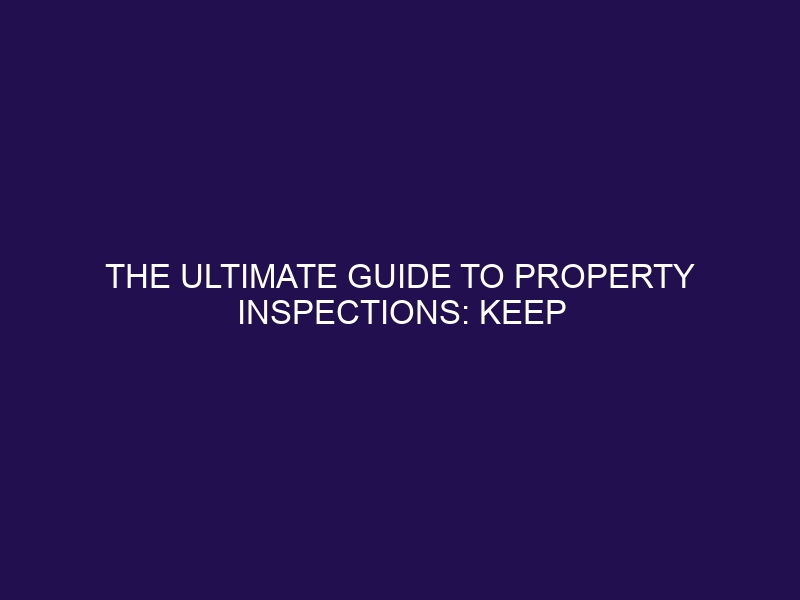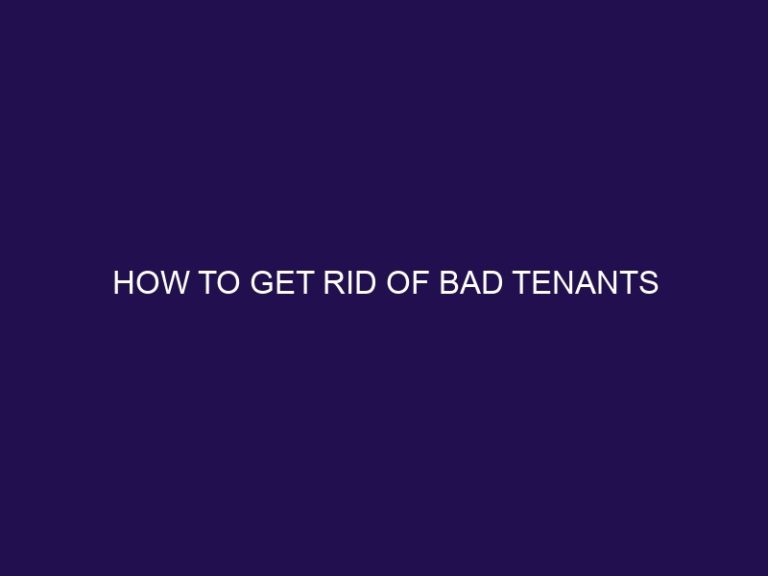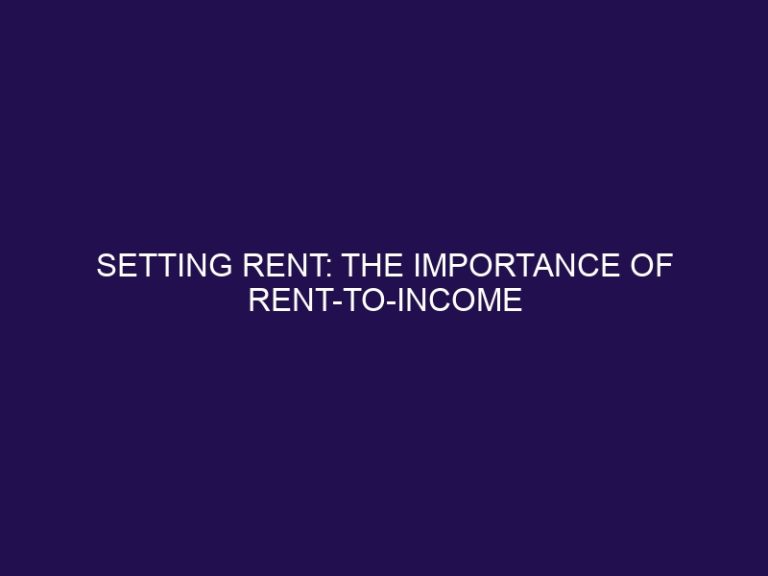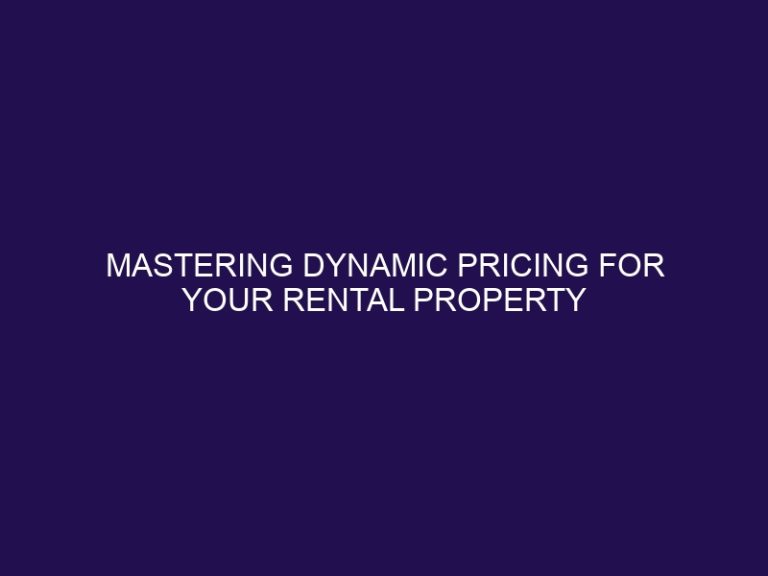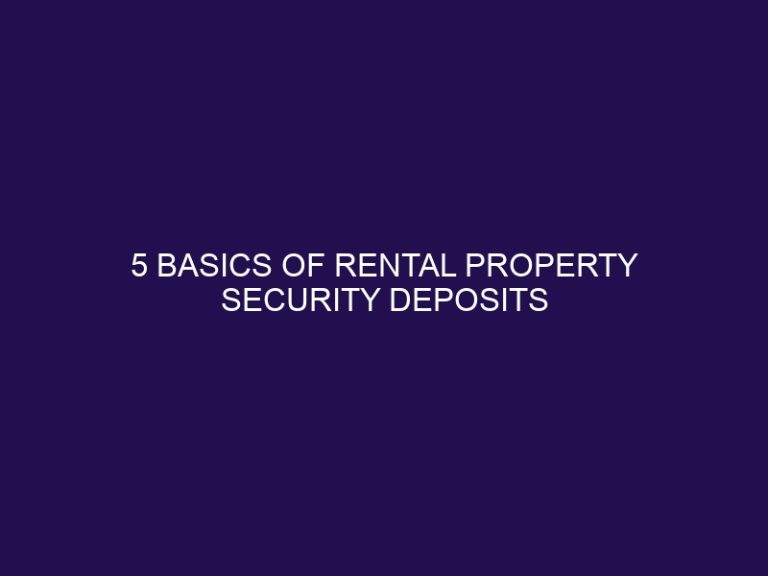The Ultimate Guide to Property Inspections: Keep Your Rentals in Top Shape
As a rental property owner, ensuring the upkeep and maintenance of your properties is crucial to attracting and retaining tenants, as well as safeguarding your investment. One key aspect of this maintenance is conducting thorough property inspections at various stages of a tenant’s occupancy.
In this comprehensive guide, we will delve into the importance of property inspections for rental owners and provide valuable insights into move-in, mid-lease, and move-out inspections. We will explore the role of expert property management services in optimizing property inspections and share essential rental maintenance tips to keep your properties in top shape.
Understanding the process of rental property inspections, including their types, key steps, and frequency, will also be covered, along with practical tips for conducting thorough assessments and leveraging automated solutions for effortless inspections. By the end of this article, you will have a clear understanding of how to take control of the rental experience through streamlined inspections and innovative solutions, ultimately saving time, money, and stress. So, let’s delve into the essential aspects of property inspections and equip you with the knowledge needed to ensure the optimal condition of your rental properties.
Key Takeaways:
Understanding the Importance of Property Inspections for Rental Owners
Property inspections are crucial for rental owners to ensure the maintenance and safety of their properties and to comply with regulations such as the Fair Housing Act in Philadelphia.
What is a Move-In Inspection and Why is it Important?
A move-in inspection is a detailed assessment of the rental property’s condition conducted before a tenant occupies the premises, serving to document its initial state and ensure compliance with the Fair Housing Act.
It plays a crucial role in protecting both the landlord and the tenant, as it creates a record of the property’s condition at the beginning of the tenancy. This documentation can help in resolving any disputes concerning the refund of the security deposit when the tenant moves out. Move-in inspections help to identify any existing damages, safety hazards, or maintenance issues, ensuring that necessary repairs are addressed before the tenant moves in.
By establishing a baseline for the property’s condition, move-in inspections provide clarity regarding the responsibilities of the tenant in maintaining the premises. This can be particularly important when it comes to determining the tenant’s liability for any damages that occur during their occupancy. Understanding the significance of move-in inspections can help both landlords and tenants uphold their rights and obligations within the rental agreement.
Understanding Mid-Lease Inspections and Their Necessity
Mid-lease inspections involve periodic assessments of the rental property’s condition during a tenant’s occupancy, providing landlords with insights into property maintenance, potential safety hazards, and adherence to lease agreements.
These inspections are crucial for ensuring that the property remains in good condition, addressing any maintenance issues promptly to prevent them from escalating. They also play a vital role in identifying safety concerns such as faulty wiring, structural weaknesses, or fire hazards, which could pose risks to both the tenant and the property.
Mid-lease inspections help verify that tenants are abiding by the terms of the lease, such as restrictions on pets or smoking, thus maintaining the integrity of the rental agreement.
The Importance of a Move-Out Inspection: Normal Wear and Tear vs. Tenant Damage
A move-out inspection is essential for differentiating normal wear and tear from tenant-induced damage, facilitating the fair assessment of the property’s condition and the appropriate handling of the security deposit, in accordance with the Fair Housing Act.
During a move-out inspection, a detailed examination of the property is conducted to identify any damage or excessive wear that exceeds normal expectations. This process plays a crucial role in deciding the proper allocation of the security deposit and ensuring compliance with tenant-landlord regulations. By documenting the property’s condition accurately, the inspection findings serve as a critical reference point for resolving any disputes regarding damages and deposit refunds.
Optimizing Property Inspections with Expert Property Management Services
Optimizing property inspections involves leveraging expert property management services to streamline the inspection process, enhance property investment value, and ensure efficient rental management for both residential and commercial spaces.
5 Essential Rental Maintenance Tips for Keeping Properties in Top Shape
Proactive rental maintenance is essential for preserving property condition and tenant satisfaction, involving routine inspections, hazard mitigation, and diligent property care by landlords.
Taking Advantage of Pest Control
Implementing proactive pest control measures is crucial for rental maintenance, mitigating safety hazards and preserving property condition through diligent property care.
Proactive pest control not only addresses safety risks posed by pests such as rodents and insects but also plays a vital role in fostering a clean and pleasant living environment for tenants. By maintaining a pest-free environment, landlords can ensure the structural integrity of their properties and prevent potential damage caused by pests. Investing in regular pest inspections and employing environmentally friendly pest control methods aligns with sustainable property management practices, ultimately enhancing the overall appeal and value of the rental property.
Performing Routine Inspections
Regular and thorough routine inspections are fundamental for proactive rental maintenance, enabling landlords to assess property condition, address potential issues, and uphold tenant satisfaction.
By conducting routine inspections, landlords gain valuable insights into the overall condition of their rental properties. The assessments facilitate timely identification and resolution of any maintenance needs, ensuring that the property remains in top-notch shape.
These inspections play a pivotal role in fostering positive relationships with tenants, as it demonstrates the landlord’s commitment to providing a well-maintained living environment. When tenants feel that their concerns are promptly addressed, it boosts their satisfaction and fosters a sense of trust and reliability.
Hiring a Landscaper
Engaging the services of a professional landscaper contributes to comprehensive rental maintenance, ensuring property care, aesthetic appeal, and environmental upkeep for rental properties.
A landscaper plays a pivotal role in maintaining the outdoor areas of rental properties, offering regular care and maintenance to keep the property in optimum condition. Their expertise extends to various aspects such as lawn care, plant selection, irrigation management, and hardscaping, contributing to the overall appeal of the property.
By leveraging their knowledge, landlords can ensure that the property stands out in the competitive rental market, attracting prospective tenants and maximizing rental income. Landscapers understand the importance of sustainable practices, integrating environmentally-friendly solutions to minimize resource consumption and promote a greener living environment for tenants.
Caring for the HVAC System
Proactive maintenance and care for the HVAC system are essential components of comprehensive rental maintenance, ensuring tenant comfort, property preservation, and efficient operation for rental properties.
Regular inspection and upkeep of the HVAC system can prevent unexpected breakdowns, which could disrupt the comfort of tenants and lead to costly emergency repairs. Timely filter replacements, duct cleaning, and professional maintenance also contribute to better indoor air quality, creating a healthier living environment for tenants.
Proper care of the HVAC system not only enhances tenant satisfaction but also prolongs the longevity of the property’s heating and cooling equipment, ultimately protecting the landlord’s investment.
Maintaining the Water Heater
Regular maintenance and upkeep of the water heater are integral to comprehensive rental maintenance, ensuring property care, tenant comfort, and the prevention of potential issues through routine inspections.
When a water heater is functioning optimally, it contributes to the overall wellbeing of the property and the satisfaction of the tenants. Scheduling regular maintenance appointments allows professionals to inspect the heater, identifying potential problems before they escalate. Water heater maintenance also prolongs the appliance’s lifespan, reducing the likelihood of sudden breakdowns that can inconvenience tenants and disrupt the property management process. Implementing a maintenance schedule not only supports property care but also aids in cost-effective management by averting major repairs and replacements.
Understanding the Process of Rental Property Inspections
Understanding the process of rental property inspections encompasses the inspection experience, adherence to the rental agreement, and the comprehensive evaluation of property condition and safety standards.
Importance and Types of Rental Property Inspections
Rental property inspections are integral to maintaining property condition, tenant satisfaction, and regulatory compliance, encompassing various types such as move-in, move-out, and mid-lease inspections.
Move-in inspections are crucial for documenting the property’s condition before a new tenant occupies the unit, ensuring that any pre-existing damages are noted to prevent disputes at the end of the lease. On the other hand, move-out inspections are essential to assess damages caused during the tenancy, determine the return of the security deposit, and prepare the property for the next occupants.
Mid-lease inspections serve as proactive measures to identify maintenance needs, address tenant concerns, and ensure that the property is being well-maintained.
The involvement of tenants, property managers, and landlords is imperative in conducting thorough inspections. Tenants should actively participate in move-in and move-out inspections to clearly communicate the property’s condition and any concerns. Property managers play a pivotal role in coordinating inspections, ensuring that they are conducted professionally and in adherence to regulations. They are responsible for assessing property conditions and addressing any maintenance issues promptly.
Following inspection checklists is crucial to systematically examine every aspect of the property, from the functionality of appliances to the condition of walls and floors, to maintain consistency and thoroughness in inspections.
Key Steps for Conducting a Rental Property Inspection
Conducting a rental property inspection involves key steps such as notifying tenants, documenting findings, and resolving discrepancies to ensure a fair assessment and handling of the security deposit for landlords.
When initiating a rental property inspection, it’s crucial to schedule the process well in advance, taking into consideration the convenience of the tenants. Communication is vital, so providing clear notice of the inspection date and time fosters transparency and cooperation.
Upon inspection, meticulous documentation of the property’s condition is essential, including photographs and detailed notes to accurately capture any existing damages or maintenance requirements.
Handling discrepancies with objectivity and fairness is vital. Utilizing a comprehensive checklist can help compare the property’s condition pre and post-tenancy, aiding in a thorough evaluation. If discrepancies arise, open dialogue with the tenant is key to resolving any differences of opinion regarding the property’s condition.
Frequency and Hiring of Rental Property Inspectors
Determining the frequency of rental property inspections and the potential hiring of professional inspectors are vital considerations, ensuring proactive property care, adherence to inspection schedules, and effective communication with tenants.
Regular rental property inspections play a crucial role in identifying maintenance needs, ensuring safety compliance, and maintaining the overall quality of the property. Engaging professional inspectors can bring expertise and efficiency to the inspection process, addressing potential issues before they escalate.
Implementing inspection reminders can help maintain a consistent schedule, preventing oversights and ensuring that inspections occur at appropriate intervals. Effective communication with tenants about inspection schedules fosters a collaborative approach, promoting respect for their privacy and minimizing disruptions.
By adhering to a well-structured inspection plan, property owners can enhance tenant satisfaction and retention, and ultimately safeguard the long-term value of their rental properties.
Top Tips for Rental Property Inspections to Ensure a Thorough Assessment
Implementing top tips for rental property inspections is essential for ensuring a thorough assessment, addressing safety hazards, and prioritizing resident satisfaction through meticulous property evaluation and maintenance.
Understanding the Purpose and Importance of Rental Inspections
Rental inspections serve the purpose of evaluating property condition, ensuring compliance with the rental agreement, and maintaining the safety and satisfaction of tenants, underscoring their critical importance in rental property management.
Regular rental inspections play a pivotal role in property management by allowing landlords and property managers to assess the condition of the property, identify any maintenance or safety issues, and ensure that the tenants are adhering to the terms of the lease agreement. These inspections offer an opportunity to address any concerns promptly, maintain the property’s value, and create a safe and comfortable environment for the tenants.
How Often to Conduct Rental Property Assessments
Determining the frequency of rental property assessments is crucial for effective property maintenance, safety assurance, and the preservation of property condition, ensuring optimal care for rental properties.
Regular property assessments are essential to identify potential issues early on, preventing them from escalating and becoming more costly to rectify. The frequency of assessments should be tailored to the specific needs of the property and its inhabitants. Factors such as the age and condition of the property, the presence of hazards, and the nature of the rental agreement should all be considered when establishing an assessment schedule. This proactive approach enables property owners to address any concerns promptly and maintain the overall safety and appeal of their rental properties.
8 Essential Rental Property Inspection Tips to Save Time, Money, and Stress
Implementing essential rental property inspection tips can lead to time and cost savings while reducing stress, focusing on proactive property care, effective inspection reminders, and streamlined inspection processes.
Properly documenting the condition of the property during inspections is crucial for resolving disputes with tenants and for insurance purposes. Using a standardized inspection checklist can ensure that all aspects of the property are thoroughly assessed. It’s also important to schedule regular inspections to catch any issues early and prevent them from escalating. Leveraging technology such as property management software can help streamline the inspection process and improve organization and reporting.
Effortless Rental Property Inspections with Automated Solutions
Effortless rental property inspections can be achieved through the integration of automated solutions, streamlining property management inspections and the inspection process for enhanced efficiency and convenience.
Taking Control of the Rental Experience with Streamlined Inspections
Taking control of the rental experience involves implementing streamlined inspections as part of effective property management, ensuring tenant satisfaction, property upkeep, and efficient inspection processes.
Performing a Free Inspection with Innovative Solutions
Performing a free inspection with innovative solutions can revolutionize property management inspections, leveraging automation and advanced tools to offer cost-effective and comprehensive inspection services for rental properties.
Frequently Asked Questions
What is a property inspection?
A property inspection is an essential process that involves assessing the condition and maintenance needs of a rental property. It typically involves a thorough examination of the interior and exterior of the property, including its systems and appliances.
Why is property inspection important for rental properties?
Property inspections are important for rental properties because they help landlords identify any maintenance or safety issues that need to be addressed. Regular inspections can prevent small problems from becoming bigger and more expensive issues in the future.
How often should a rental property be inspected?
The frequency of property inspections may vary depending on the state or local laws, but it is generally recommended to conduct inspections at least once a year. However, it may be necessary to schedule more frequent inspections if there are specific concerns or issues with the property.
Who is responsible for conducting property inspections?
The landlord or property owner is typically responsible for conducting property inspections. However, they may hire a professional property management company or inspector to handle the inspections on their behalf.
What should landlords look for during property inspections?
During property inspections, landlords should check for any damages, safety hazards, or maintenance issues that need to be addressed. This may include checking the structural integrity of the property, inspecting appliances and systems, and looking for any signs of damage or wear and tear.
Can tenants be present during property inspections?
It is generally recommended to conduct property inspections when the tenant is not present. However, if the tenant wants to be present during the inspection, it is important to schedule a time that is convenient for both parties and to respect the tenant’s privacy while inspecting the property.

